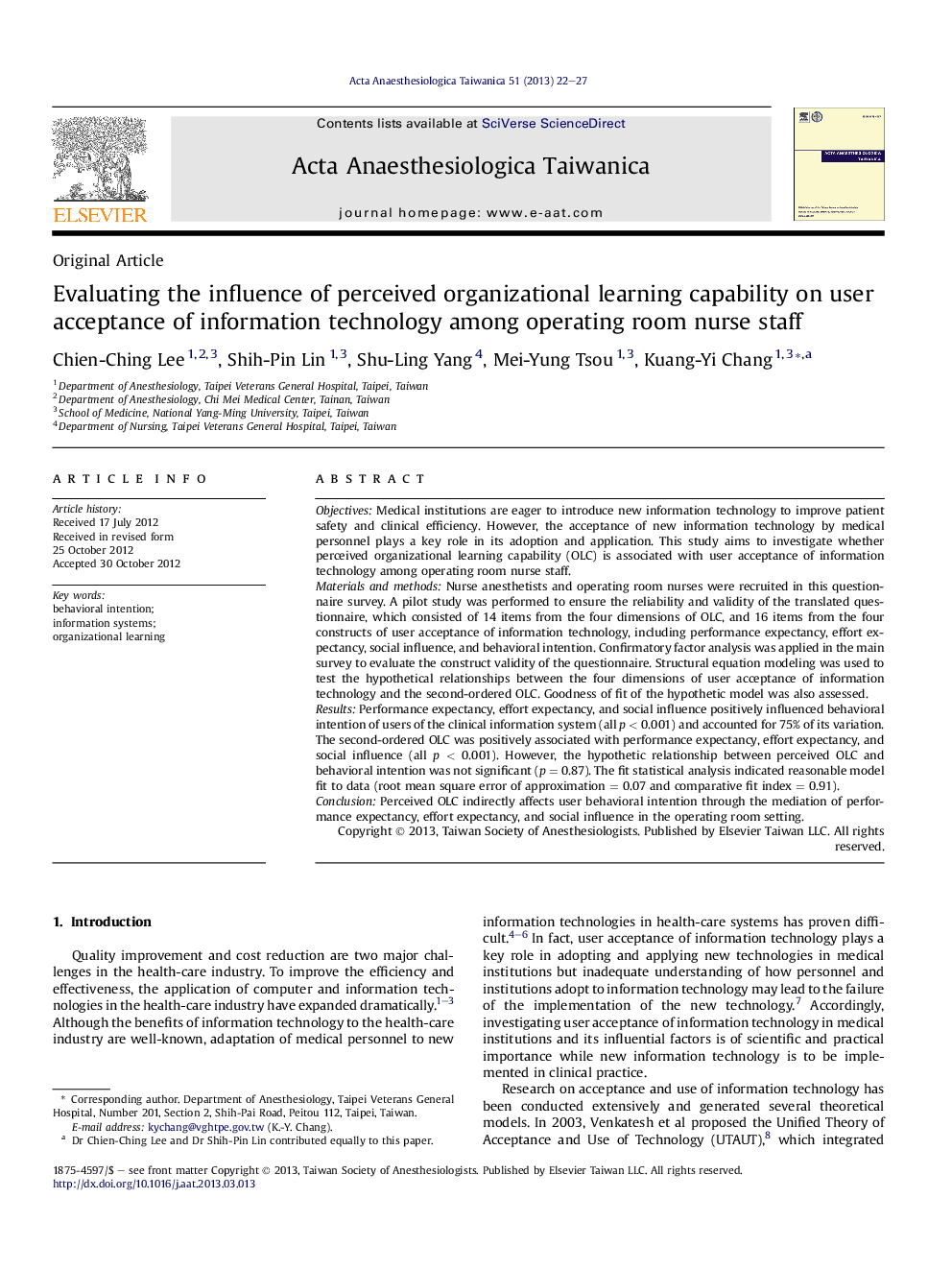| کد مقاله | کد نشریه | سال انتشار | مقاله انگلیسی | نسخه تمام متن |
|---|---|---|---|---|
| 2741488 | 1148534 | 2013 | 6 صفحه PDF | دانلود رایگان |

ObjectivesMedical institutions are eager to introduce new information technology to improve patient safety and clinical efficiency. However, the acceptance of new information technology by medical personnel plays a key role in its adoption and application. This study aims to investigate whether perceived organizational learning capability (OLC) is associated with user acceptance of information technology among operating room nurse staff.Materials and methodsNurse anesthetists and operating room nurses were recruited in this questionnaire survey. A pilot study was performed to ensure the reliability and validity of the translated questionnaire, which consisted of 14 items from the four dimensions of OLC, and 16 items from the four constructs of user acceptance of information technology, including performance expectancy, effort expectancy, social influence, and behavioral intention. Confirmatory factor analysis was applied in the main survey to evaluate the construct validity of the questionnaire. Structural equation modeling was used to test the hypothetical relationships between the four dimensions of user acceptance of information technology and the second-ordered OLC. Goodness of fit of the hypothetic model was also assessed.ResultsPerformance expectancy, effort expectancy, and social influence positively influenced behavioral intention of users of the clinical information system (all p < 0.001) and accounted for 75% of its variation. The second-ordered OLC was positively associated with performance expectancy, effort expectancy, and social influence (all p < 0.001). However, the hypothetic relationship between perceived OLC and behavioral intention was not significant (p = 0.87). The fit statistical analysis indicated reasonable model fit to data (root mean square error of approximation = 0.07 and comparative fit index = 0.91).ConclusionPerceived OLC indirectly affects user behavioral intention through the mediation of performance expectancy, effort expectancy, and social influence in the operating room setting.
Journal: Acta Anaesthesiologica Taiwanica - Volume 51, Issue 1, March 2013, Pages 22–27